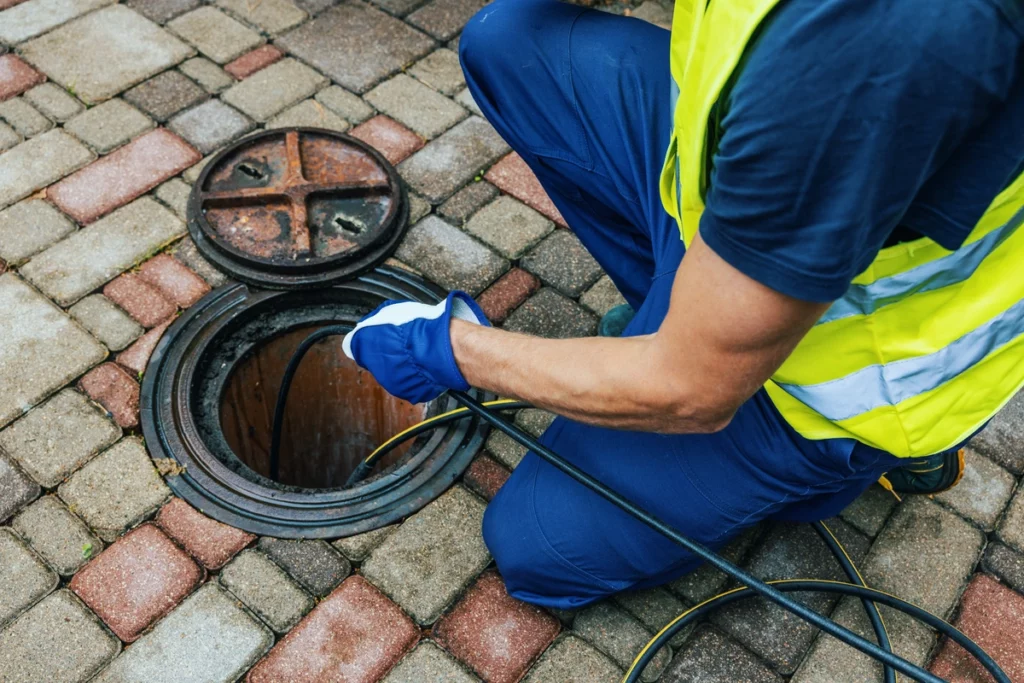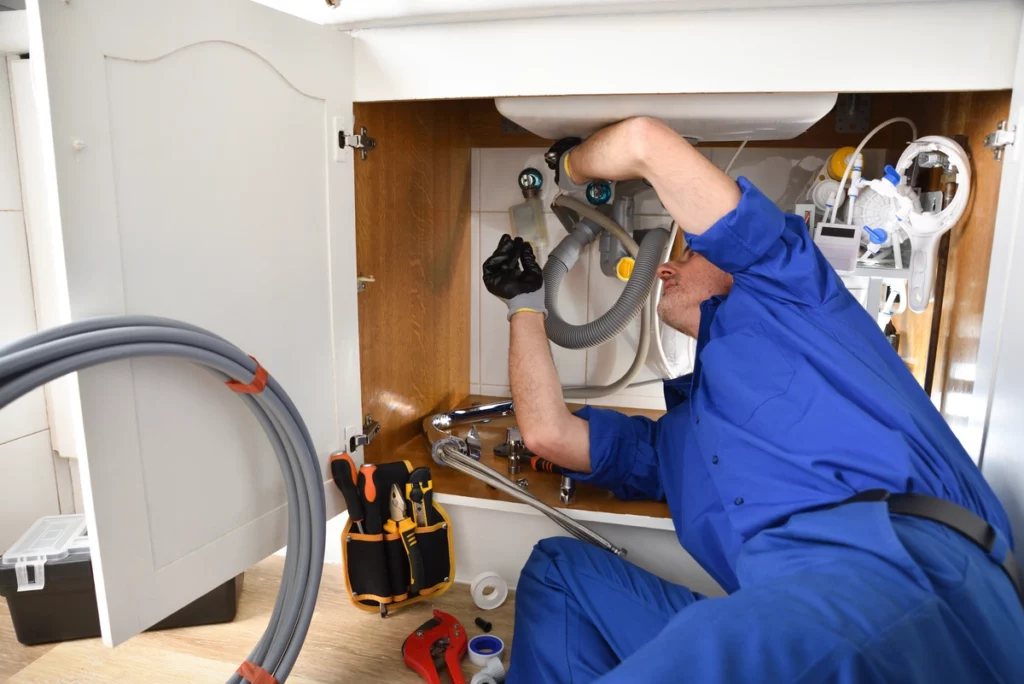After a summer spent gardening, pool-filling, and running through the sprinklers in the backyard, you might find that your outdoor faucet is a little worse for wear. Here’s how you know it’s time to get that spigot replaced:
- The faucet is leaking, leading to a high water bill
- You have low water pressure from that faucet but not anywhere else in your home
- You want to switch to a frost-free outdoor faucet model
- It’s just an eyesore and needs to be upgraded to a new fixture
No matter the reason for the project, follow these steps on how to replace an outside faucet.
Step 1. Gather Your Tools

Here are the supplies you’ll need to complete the project:
- New spigot or faucet (may need to measure the old faucet before purchasing the new one)
- Wrench
- Tape measure
- Plumber’s tape
- Concrete screws
- Screwdrivers (Phillips head and flat head)
- Plumbing pipe
- Caulk (be sure to purchase the kind meant for exterior use)
- Pipe cutter (depending on the kind of pipe in your wall)
Depending on the type of pipes that run to your outdoor faucet and the material used for your foundation, you may also need more specialty tools like a soldering torch or masonry cutting tools.
Step 2. Turn Off the Water Supply
Before you can install the new faucet, you need to shut off the water supply to that line. If you have a specific shutoff valve for your exterior faucet, you can cut off the water supply there and leave the water running to the rest of your home. If you don’t, you’ll need to turn off the water supply to your entire home via your water meter.
Once you have the water supply cut off, open the appropriate faucet and let the water drain completely. If you only shut off the water to the faucet you’re working on, simply turn that faucet on until the water stops coming out of the pipe. If you shut off the water to your entire home, open the lowest faucet in your home and wait for the water to finish running through it.
Step 3. Remove the Old Faucet
After the water has been drained from your water lines, you can safely remove the old spigot. Start by unscrewing the faucet using the appropriate screwdriver for the job.
If you have PVC or PEX piping, it’s likely that your faucet is attached to a piece of piping in the wall (it can range anywhere from 8″ to 16″ in length). Once it’s unscrewed from your foundation, use your wrench to turn the faucet counterclockwise, loosen the pipe completely, and then pull it out of the wall.
Measure the length of the pipe connected to the faucet using your tape measure, or take the whole thing with you to the hardware store when you purchase your new faucet.
Copper Piping
If you have copper piping, you may need to cut the pipe inside the wall instead of unscrewing it. On the inside of your home, mark the place where you want to cut the pipe and use a pipe cutter to cut it at that spot. Have a bucket positioned underneath you to catch any remaining water in the pipes that will drip out when you cut the pipe.
When you go to the hardware store, you’ll need to be an adapter and as much copper pipe as you need to replace the piece you cut away.
Step 4. Put New Spigot in Place

Once you’ve purchased the right size and style of faucet, it’s time to put it in the wall!
- Wrap it in tape: Cover the threads of the pipe with plumbing tape. Wrap clockwise so that the tape won’t unwind in the wall when you screw the pipe into place.
- Drill pilot holes: Drill pilot holes into your foundation so that you can screw the faucet in place. You can technically get by without doing this step, but you’ll likely end up with a loose faucet that will eventually allow leaks into your home.
- Hand-tighten the faucet: Place your faucet and any connected pipes into the hole in the wall. Screw the faucet pipe into place.
- Fasten the spigot in place: Use your plumbing wrench to tightly twist the faucet into place and ensure that you won’t get leaks inside your walls.
- Solder: If you’re using copper piping, place the adapter to connect the old and new copper piping. Use your soldering tool to form a strong connection between all the pieces.
- Caulk: Fill any gaps between the wall and the faucet with exterior-safe caulk. Follow all packaging instructions when using this product.
- Install screws: Put screws into the faucet and align them with your pilot holes. Secure the whole piece in place.
Step 5. Turn the Water Supply Back On
Once all the steps are complete, all that’s left to do is turn the water back on to your home and faucet. Enjoy your new outdoor spigot!
How to Replace an Outside Faucet: Call in the Experts
Follow the steps listed above, and you should soon get the new outdoor faucet of your dreams. As you can see, knowing how to replace an outside faucet does require some specialized tools and experience, and the specifics of the process will be different depending on the exact faucet you have on your home.
When you need a replacement faucet, sometimes it’s just easier to higher to an expert to help you out. Anytime you’re looking for help with your outdoor faucets, give AJ Alberts a call. With decades of experience in the business and a highly experienced plumbing team, we’ll have what you need to get the repair you’re looking for.
Ready to hear more? Reach out to us today to get started!







